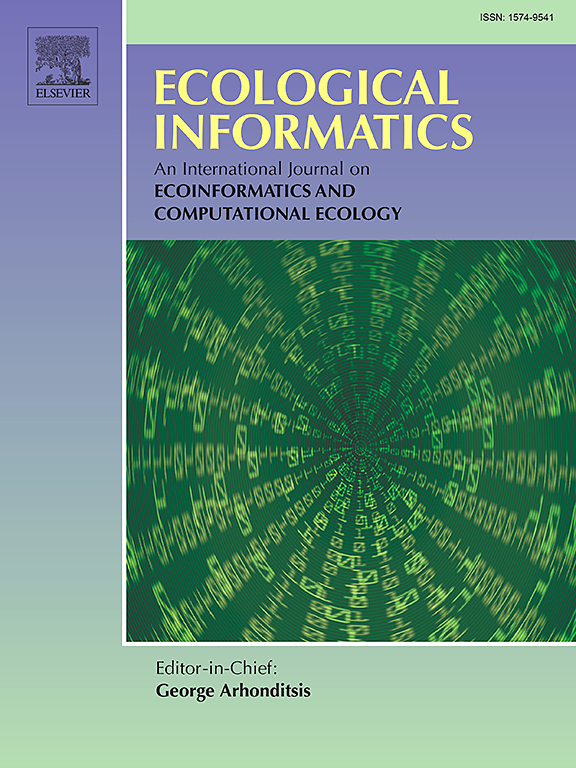Spatio-temporal patterns of holoplanktonic mollusc assemblages and indicator species of hydrodynamic conditions in the northwestern South China Sea
IF 5.8
2区 环境科学与生态学
Q1 ECOLOGY
引用次数: 0
Abstract
Holoplanktonic molluscs are a group of overlooked but ecologically important zooplankton in marine ecosystems that play a crucial role in the marine food web and carbon cycle. However, changes in the marine environment can lead to an increase in the abundance of pelagic molluscs, causing ecological disasters. To understand the environmental factors that structure holoplanktonic mollusc assemblages, their diversity and abundance were analyzed in the northwestern South China Sea (NWSCS). A total of 39 holoplanktonic molluscs were identified, including 24 pteropod and 15 heteropod species. Significant seasonal and regional differences were observed in species diversity and abundance. Species richness was higher in offshore waters than in nearshore waters during summer and winter, whereas species abundance was significantly higher in summer than in winter. High species abundance was mainly concentrated in waters influenced by cyclonic eddies and coastal upwelling during summer. Temperature, salinity and chlorophyll a are important factors for structuring holoplanktonic mollusc assemblages. Creseis acicula was an effective indicator species in nearshore waters in both seasons, whereas Limacina bulimoides and Heliconoides inflatus were the best indicators in offshore waters in summer and winter, respectively. These findings can form a baseline for understanding the distribution of holoplanktonic molluscs in the marginal sea of the northwestern Pacific Ocean and provide a solid foundation for monitoring zooplankton in a changing ocean and for sustainable ecosystem management.
南海西北部全浮游软体动物群落的时空格局及水动力条件指示物种
全浮游软体动物是一种在海洋生态系统中被忽视但具有重要生态意义的浮游动物,在海洋食物网和碳循环中起着至关重要的作用。然而,海洋环境的变化会导致远洋软体动物数量的增加,造成生态灾难。为了解构成南海西北海域全浮游软体动物群落的环境因子,对其多样性和丰度进行了分析。共鉴定出39种全浮游软体动物,其中翼足类24种,异足类15种。物种多样性和丰度存在明显的季节和区域差异。夏季和冬季物种丰富度在近海高于近岸,夏季物种丰富度显著高于冬季。夏季高物种丰度主要集中在受气旋涡旋和沿岸上升流影响的水域。温度、盐度和叶绿素a是影响全浮游软体动物群落结构的重要因素。两个季节近岸水域的有效指示种为针叶Creseis acicula,近海水域的最佳指示种分别为夏季和冬季的Limacina bulimoides和Heliconoides inflatus。这些发现可以为了解西北太平洋边缘海域全浮游软体动物的分布提供基础,并为不断变化的海洋中浮游动物的监测和生态系统的可持续管理提供坚实的基础。
本文章由计算机程序翻译,如有差异,请以英文原文为准。
求助全文
约1分钟内获得全文
求助全文
来源期刊

Ecological Informatics
环境科学-生态学
CiteScore
8.30
自引率
11.80%
发文量
346
审稿时长
46 days
期刊介绍:
The journal Ecological Informatics is devoted to the publication of high quality, peer-reviewed articles on all aspects of computational ecology, data science and biogeography. The scope of the journal takes into account the data-intensive nature of ecology, the growing capacity of information technology to access, harness and leverage complex data as well as the critical need for informing sustainable management in view of global environmental and climate change.
The nature of the journal is interdisciplinary at the crossover between ecology and informatics. It focuses on novel concepts and techniques for image- and genome-based monitoring and interpretation, sensor- and multimedia-based data acquisition, internet-based data archiving and sharing, data assimilation, modelling and prediction of ecological data.
 求助内容:
求助内容: 应助结果提醒方式:
应助结果提醒方式:


